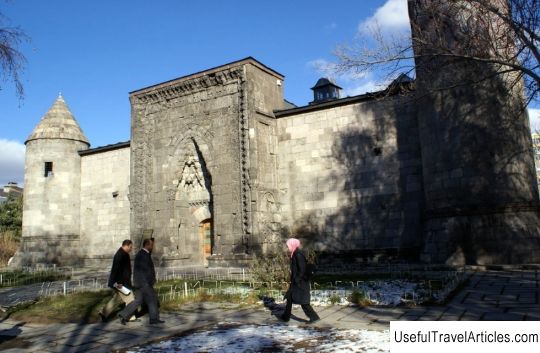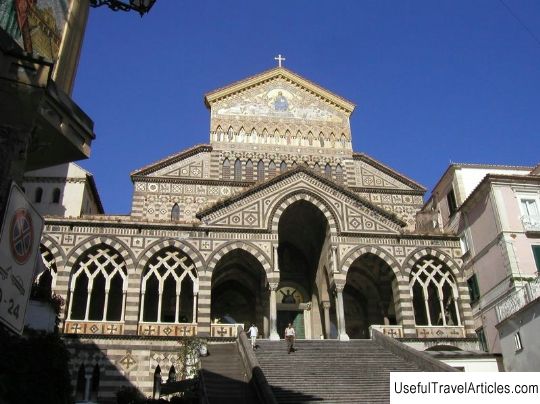Yakutiye Madrasah (Yakutiye Medresesi) description and photos - Turkey: Erzurum
Rating: 8,0/10 (4653 votes) 
Yakutiye Medresesi description and photos - Turkey: Erzurum. Detailed information about the attraction. Description, photographs and a map showing the nearest significant objects. The title in English is Yakutiye Medresesi. Photo and descriptionFour hundred meters west of the Grand Mosque, in the very center of Erzurum, there is the Yakutia madrasah, built in 1310 by Khoja Jelaleddin Yakut, the Mongol ruler of Ulyaytu under the Mongol emirs. Now it is one of the rare buildings that have survived from the time of the Ilhamites to the present day and is used as a Museum of Islamic Culture. The building refers to a type of madrasah with a closed courtyard and four terraces, between which there are cells. The terrace located on the west side is built, unlike the others, on two floors, and the south one has the same layout as the mosque, therefore inscriptions-plates made of marble are placed on its walls. Middle courtyard covered with a dome. There is also a large dome at the end of the east terrace, under which are the remains of the eminent dead. There is a front door on the facade, leading to the outside, and on both sides of it there are minarets, which, together with the entire facade, are covered by a dome, which gives the building a monumentality and majesty. The facade is decorated with paintings on abstract and floral subjects, showing the excellent taste of the creator. All decorations applied to the walls, doors, windows and other places of the structure show the level of development of the Seljuk art, and are an indicator of its significance for the generations of the Turks of that era. On the two leaves of the front door, there are designs on the door belts. Below there are images of the tree of life, openwork balls, a two-headed eagle, etc. The balance and integrity of the madrasah architecture are provided by: the location of the Main Portal; two minarets in the corners; mausoleum opposite the building facade. This is all the most important proof of the fact that during the time of the Seljuks, architecture was based on the knowledge of engineering and was made scientifically. Around the building, until recently, there were auxiliary structures with a military barracks purpose, since this building was used as a military camp. These additional buildings were demolished in the 1970-80s and the area has regained its former appearance. The restoration of the building lasted from 1984 to 1994, and on October 29, 1994, the Museum of Turkish-Islamic Works and Ethnography opened its doors to visitors. It displays works of ethnographic significance that characterize the local population and indigenous peoples of the Erzurum province. The museum consists of several sections: 1. Hall of women's dresses and jewelry. It displays a range of outfits and ornaments traditionally characteristic of the indigenous people of the area. 2. Military supplies. In this salon all kinds of military weapons of the period of the republic and the times of the Ottomans are presented. 3. Hall with men's clothing and men's leisure sets. This exhibition features items that were used by men during the Ottoman and Republican era. 4. Exhibition of metal works. Here the overwhelming majority is occupied by items of kitchen value, made of all kinds of metals. 5. Hall of weaving skills. Since today scientific and technological progress is increasingly replacing traditional folk weaving art, in order to interest people in continuing this business, things are exhibited here, created by the hands of master weavers. 6. An exhibition of hand-made rugs and carpets, which is an indicator of the amazing skill of the local carpet weaving art. 7. Hall of handicrafts. Here you can familiarize yourself with the products of masters and craftswomen of embossing, embroidery and applique. 8. Hall of sects and traction accessories. It presents works of ethnographic significance, which were acquired by the museum and represent the life of the people for a fairly long period of time. 9. Exhibition of ceramics from the time of the Seljuk. It displays candlesticks, plates, cups and many other ceramic items from the Seljuk era. 10. Hall of coins.      We also recommend reading Asparuhov bridge description and photos - Bulgaria: Varna Topic: Yakutiye Madrasah (Yakutiye Medresesi) description and photos - Turkey: Erzurum. |




